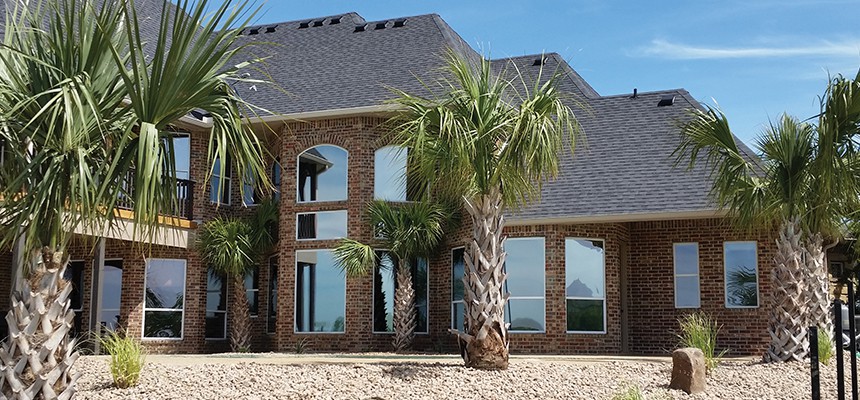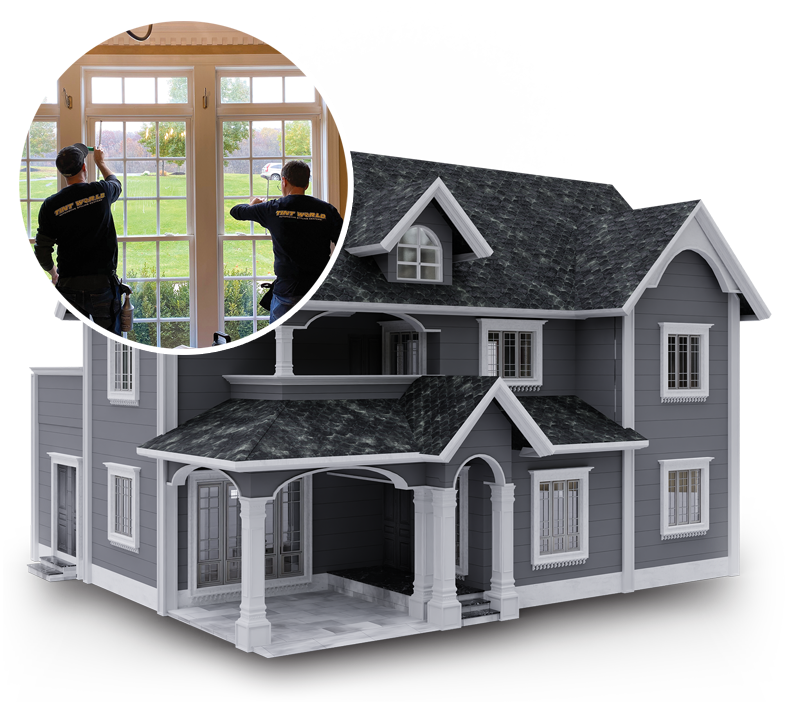Residential Window Tint: Rise Security and Add a Layer of Security
Residential Window Tint: Rise Security and Add a Layer of Security
Blog Article
Exactly How Residential Home Window Tinting Enhances Your Home's Power Efficiency
Residential window tinting presents a compelling remedy for homeowners looking for to boost energy effectiveness within their living spaces. By applying specialized films to home windows, it efficiently reduces heat transfer, consequently stabilizing indoor temperature levels and lessening the requirement for too much home heating or air conditioning.
Comprehending Window Tinting
Recognizing window tinting is important for home owners looking for to enhance both convenience and energy performance in their home. Residential Window Tint. Window tinting involves the application of a slim film to the inside or exterior surface area of glass windows. This film can dramatically regulate the quantity of sunlight and heat that enters a home, hence influencing interior climate problems
There are numerous kinds of home window tinting movies available, each with unique homes. Colored movies take in solar power, while reflective films deflect it away from the glass surface. Ceramic movies provide an equilibrium of visibility and warmth denial, making them a preferred choice among house owners. The effectiveness of window tinting is often measured by its Visible Light Transmission (VLT) percentage, which shows just how much light can pass through the movie.
Advantages of Energy Efficiency
Window tinting not only enhances aesthetic appeals however additionally plays a considerable function in boosting energy performance within household areas. By reducing warmth transfer through windows, tinted movies create an extra steady interior environment, which can result in significant reductions in energy usage for heating & cooling. This energy effectiveness equates into reduced energy costs, supplying homeowners with substantial long-lasting financial savings.

Furthermore, home window tinting boosts the comfort of living rooms. By decreasing glare and blocking unsafe UV rays, colored home windows develop a more pleasant setting, which can cause boosted health for passengers. The protection against UV rays also helps preserve furniture and flooring from fading, adding to the durability of household things.
How Tinting Works
Tinting films operate with a combination of innovative products and innovations developed to regulate the quantity of solar power going into a home. Largely composed of polyester, these movies usually integrate metal or ceramic bits that soak up and mirror warmth. This dual capability enables them to significantly reduce the penetration of ultraviolet (UV) rays and infrared radiation while allowing noticeable light to travel through.
The effectiveness of home window tinting is measured by its solar warmth gain coefficient (SHGC), which indicates how much solar energy is sent via the home window. Lower SHGC worths are more effective as they represent greater warmth rejection. Furthermore, home window tints can include a range of tones, enabling property owners to personalize their aesthetic preferences while boosting energy efficiency.
Furthermore, these films act as an obstacle, preventing warm loss throughout colder months by showing interior heat back into the space. This thermal insulation impact matches the air conditioning advantages acquired during warmer months, adding to a well balanced indoor climate year-round. By handling solar power properly, household window tinting not only boosts comfort however also plays a crucial function in reducing power usage and reducing utility bills.
Selecting the Right Color

There are various kinds of window movies available, consisting of dyed, metalized, and ceramic. Dyed films are economical yet may have restricted longevity. Metalized movies provide much better warmth denial yet can hinder digital signals. Ceramic films provide exceptional heat control without compromising presence and are extremely sturdy, making them a prominent option.
Visible light transmission (VLT) is another important variable, as it shows the quantity of all-natural light that can go through Learn More the tinted glass. House owners must choose a tint with a VLT that complements their lighting choices while still supplying ample glare reduction.
In addition, assessing the solar warmth gain coefficient (SHGC) can aid identify exactly how well a color can obstruct warm from sunshine. A lower SHGC indicates much better warmth control, eventually boosting energy performance.
Setup and Upkeep Tips
Appropriate installment and maintenance are essential elements in making the most of the advantages of residential window tinting. Specialists likewise make use of specialized techniques and tools, which can boost the resilience and performance of the tint.
Complying with installment, see post upkeep is necessary to prolong the life of the home window movie. It is recommended to wait a minimum of 30 days prior to cleansing the colored windows to enable the glue to heal totally. When cleaning, utilize a soft fabric and directory a mild, ammonia-free cleaner to avoid damaging the film. Stay clear of abrasive materials that might scrape the surface area.
Additionally, routine assessments are helpful. Look for any kind of peeling or bubbling, which could indicate incorrect installation or use over time - Residential Window Tint. Dealing with these problems without delay can avoid further damages and keep power efficiency. By adhering to these setup and maintenance tips, homeowners can ensure their window tinting remains to give significant power savings and comfort for many years to find.
Conclusion
In conclusion, domestic home window tinting serves as an effective solution for enhancing power performance within homes. By lowering heat transfer and blocking damaging UV rays, window movies add to decrease energy consumption and improved indoor comfort.
Home window tinting entails the application of a slim film to the inside or outside surface of glass windows. By minimizing warm transfer through windows, tinted films create a more stable indoor climate, which can lead to substantial decreases in energy intake for home heating and air conditioning.The performance of window tinting is measured by its solar warmth gain coefficient (SHGC), which suggests exactly how much solar energy is transmitted through the window. By taking care of solar energy effectively, residential window tinting not just improves convenience yet likewise plays an important role in reducing energy consumption and lowering utility bills.
By reducing heat transfer and obstructing hazardous UV rays, window films contribute to lower power consumption and boosted interior convenience.
Report this page